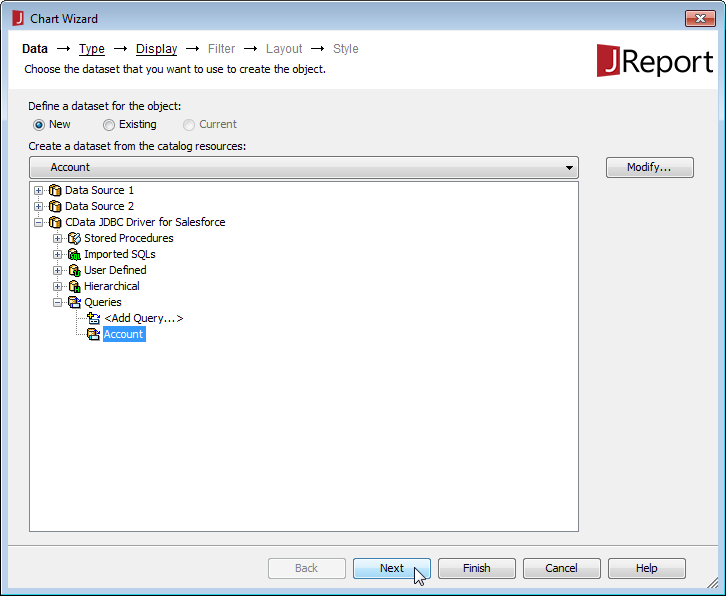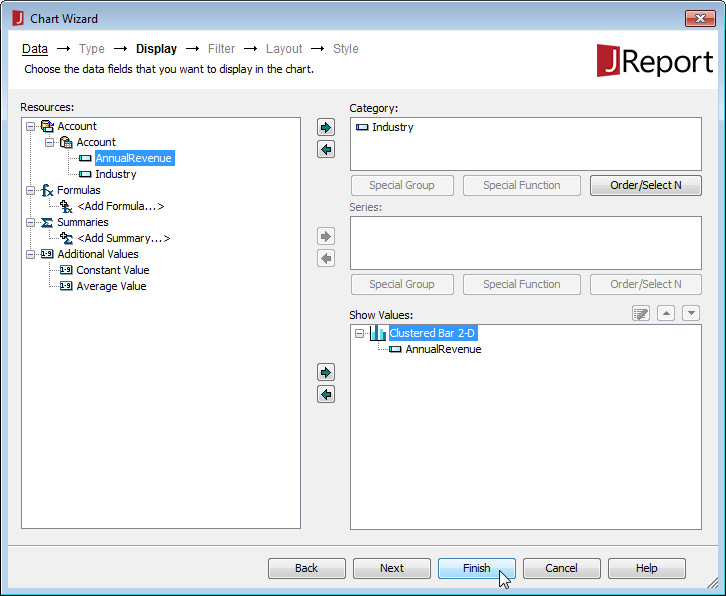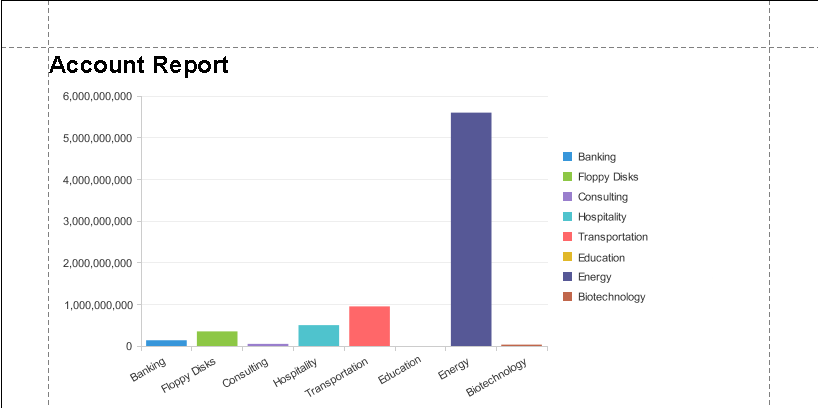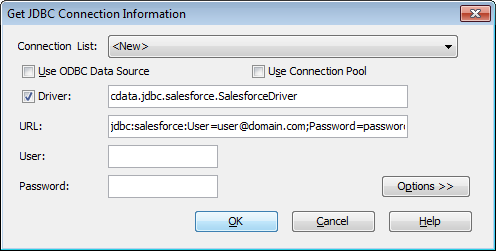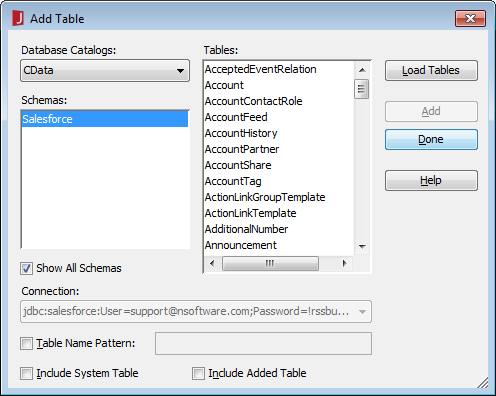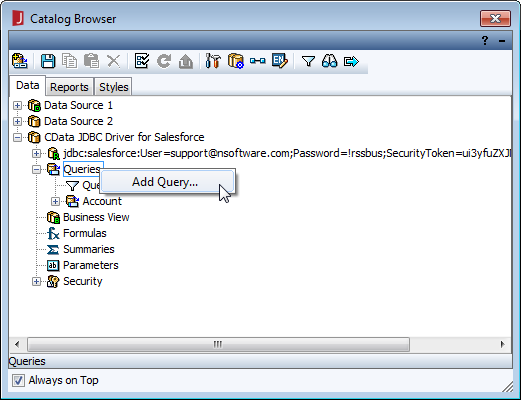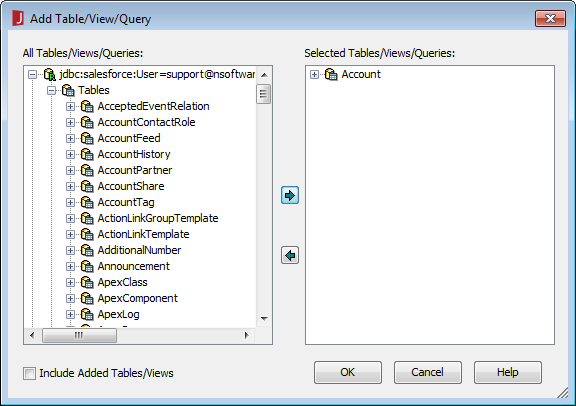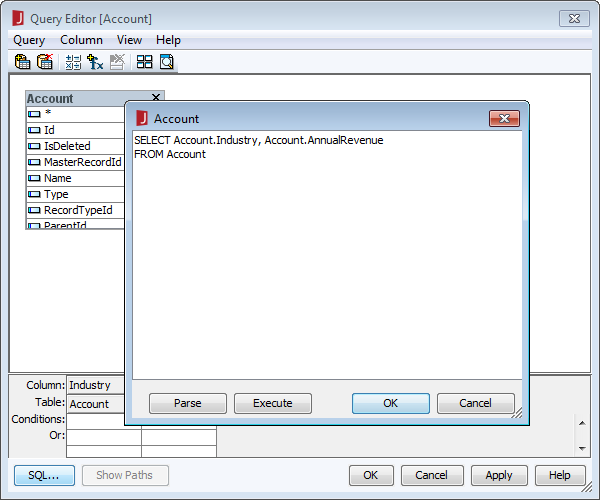Discover how a bimodal integration strategy can address the major data management challenges facing your organization today.
Get the Report →Integrate with Okta Data in JReport Designer
Create charts and reports based on Okta data in JReport Designer.
The CData JDBC Driver for Okta data enables access to live data from dashboards and reports as if Okta were a relational database, allowing you to query Okta data using familiar SQL queries. This article shows how to connect to Okta data as a JDBC data source and create reports based on Okta data in JReport Designer.
Connect to Okta Data
- Edit C:\JReport\Designer\bin\setenv.bat to add the location of the JAR file to the ADDCLASSPATH variable:
... set ADDCLASSPATH=%JAVAHOME%\lib\tools.jar;C:\Program Files\CData\CData JDBC Driver for Okta 2016\lib\cdata.jdbc.okta.jar; ...
- Create a new data source by clicking File New Data Source.
- In the resulting dialog, create a name for the data source (CData JDBC Driver for Okta), select JDBC, and click OK.
- In the Get JDBC Connection Information dialog you will configure your connection to the JDBC driver:
- Driver: Be sure that the Driver box is checked and fill in the name of the class for the driver:
cdata.jdbc.okta.OktaDriver - URL: Enter the JDBC URL. This starts with jdbc:okta: and is followed by a semicolon-separated list of connection properties.
To connect to Okta, set the Domain connection string property to your Okta domain.
You will use OAuth to authenticate with Okta, so you need to create a custom OAuth application.
Creating a Custom OAuth Application
From your Okta account:
- Sign in to your Okta developer edition organization with your administrator account.
- In the Admin Console, go to Applications > Applications.
- Click Create App Integration.
- For the Sign-in method, select OIDC - OpenID Connect.
- For Application type, choose Web Application.
- Enter a name for your custom application.
- Set the Grant Type to Authorization Code. If you want the token to be automatically refreshed, also check Refresh Token.
- Set the callback URL:
- For desktop applications and headless machines, use http://localhost:33333 or another port number of your choice. The URI you set here becomes the CallbackURL property.
- For web applications, set the callback URL to a trusted redirect URL. This URL is the web location the user returns to with the token that verifies that your application has been granted access.
- In the Assignments section, either select Limit access to selected groups and add a group, or skip group assignment for now.
- Save the OAuth application.
- The application's Client Id and Client Secret are displayed on the application's General tab. Record these for future use. You will use the Client Id to set the OAuthClientId and the Client Secret to set the OAuthClientSecret.
- Check the Assignments tab to confirm that all users who must access the application are assigned to the application.
- On the Okta API Scopes tab, select the scopes you wish to grant to the OAuth application. These scopes determine the data that the app has permission to read, so a scope for a particular view must be granted for the driver to have permission to query that view. To confirm the scopes required for each view, see the view-specific pages in Data Model < Views in the Help documentation.
Built-in Connection String Designer
For assistance in constructing the JDBC URL, use the connection string designer built into the Okta JDBC Driver. Either double-click the JAR file or execute the jar file from the command-line.
java -jar cdata.jdbc.okta.jarFill in the connection properties and copy the connection string to the clipboard.
![Using the built-in connection string designer to generate a JDBC URL (Salesforce is shown.)]()
When you configure the JDBC URL, you may also want to set the Max Rows connection property. This will limit the number of rows returned, which is especially helpful for improving performance when designing reports and visualizations.
Below is a typical JDBC URL:
jdbc:okta:Domain=dev-44876464.okta.com;InitiateOAuth=GETANDREFRESH - User: The username to authenticate with; typically left blank.
- Password: The password to authenticate with; typically left blank.
![Configuring the connection to the JDBC Driver (Salesforce is shown.)]()
- Driver: Be sure that the Driver box is checked and fill in the name of the class for the driver:
In the Add Table dialog, select the tables you wish to include in your report (or in future reports using this data source) and click Add.
![Adding Tables. (Salesforce is shown.)]()
Click Done once the dialog has completed loading the tables.
- In the Catalog Browser, you can create the queries that you will use to populate your reports. You can do this now, or after you create your report. In either case, expand () the data source (CData JDBC Driver for Okta), right-click on Queries, and select Add Query.
![Adding a query for data to be used in the report. (Salesforce is shown.)]()
- In the Add Table/View/Query dialog, expand () the JDBC URL and Tables and select the table(s) you wish to use in the query and click OK.
![Selecting a table for the query. (Salesforce is shown.)]()
- In the Query Editor dialog, you can select the columns you wish to include or simply click the SQL button and manually input your own query. For example:
SELECT Id, ProfileFirstName FROM Users WHERE Status = 'Active'
![Editing the query. (Salesforce is shown.)]()
With the query built, click OK to close the Query Editor dialog. At this point you are ready to add Okta data to a new or existing report.
NOTE: Now that the query is built, you can create a Business View based on the query. With a Business View, you can create Web reports or library components based on the query. For more information on this, refer to the JReport tutorials.
Add Okta Data to a Report
You are now ready to create a report with Okta data.
- Create a new report (File New Page Report) or open the Chart Wizard for an existing report.
- Select the Query (or create a new one; see above).
- Assign a Category and Value for the chart from the columns in your Query and click Finish.
- Click the View tab for your report to see the chart.
